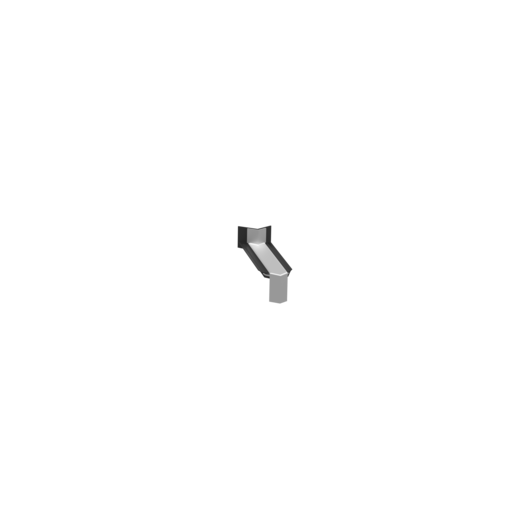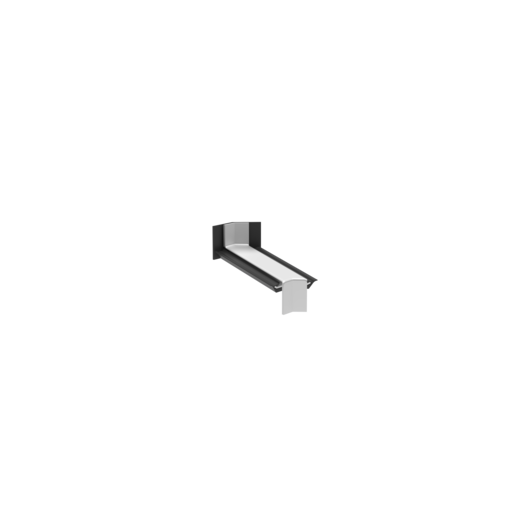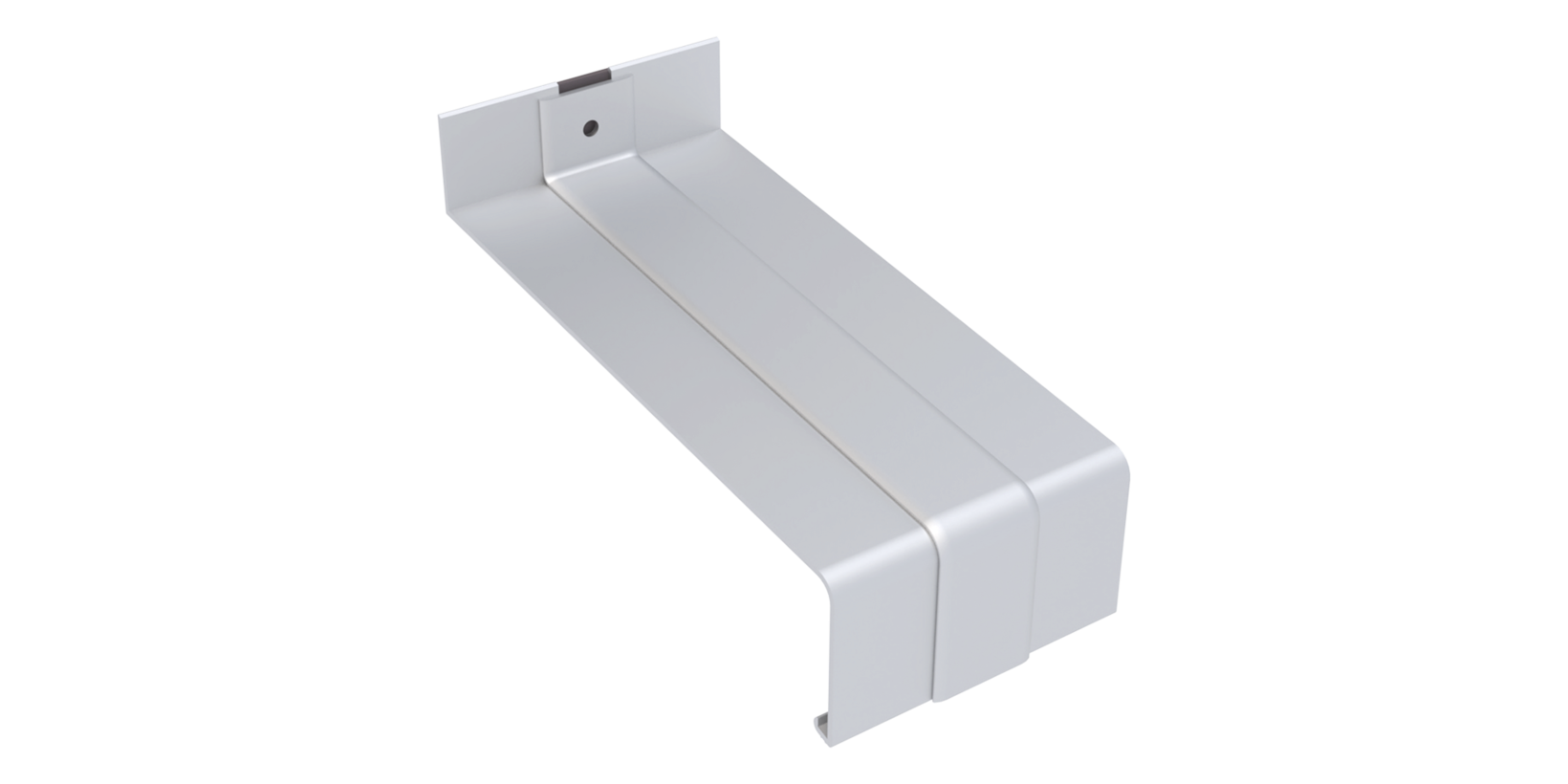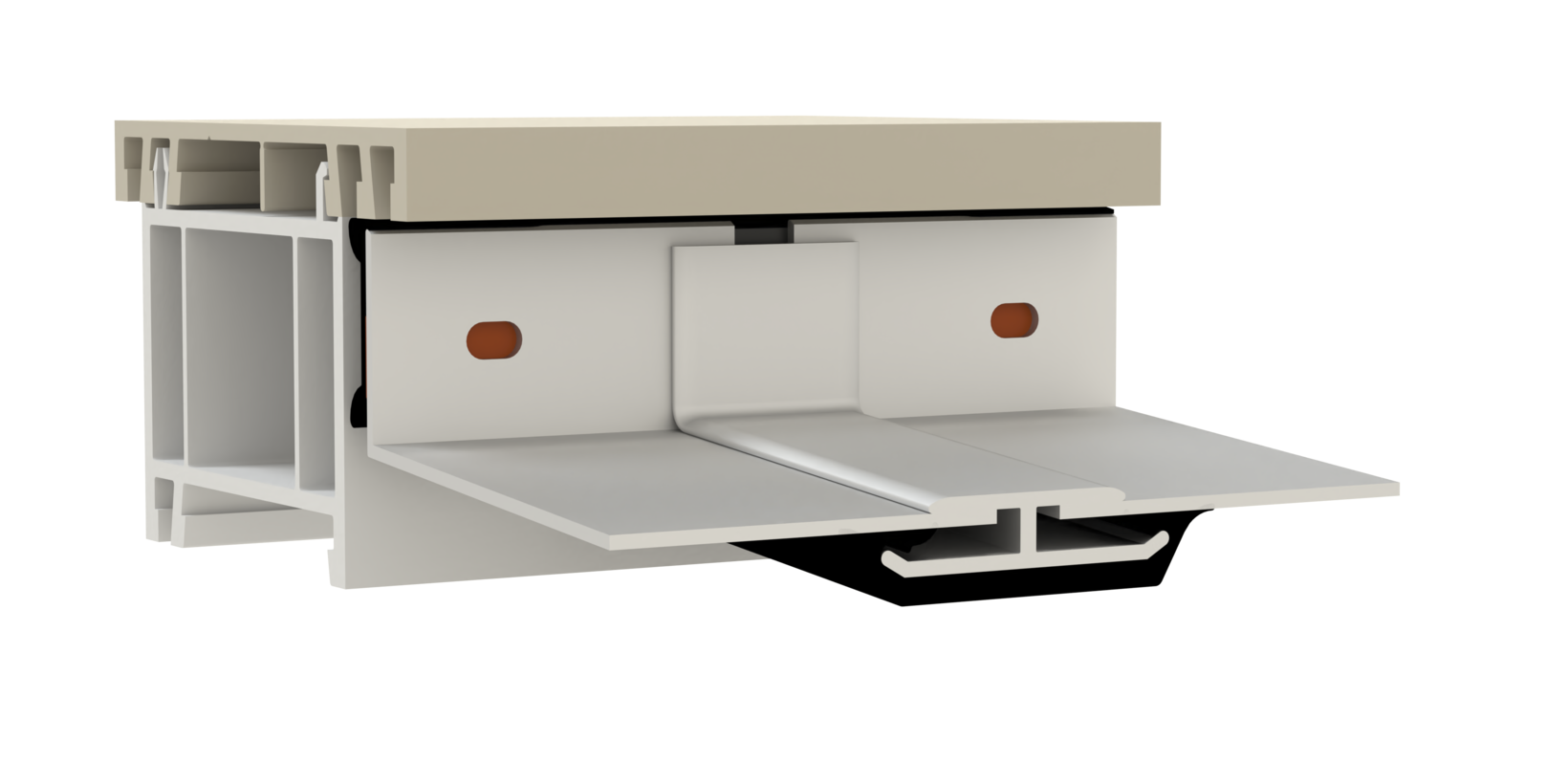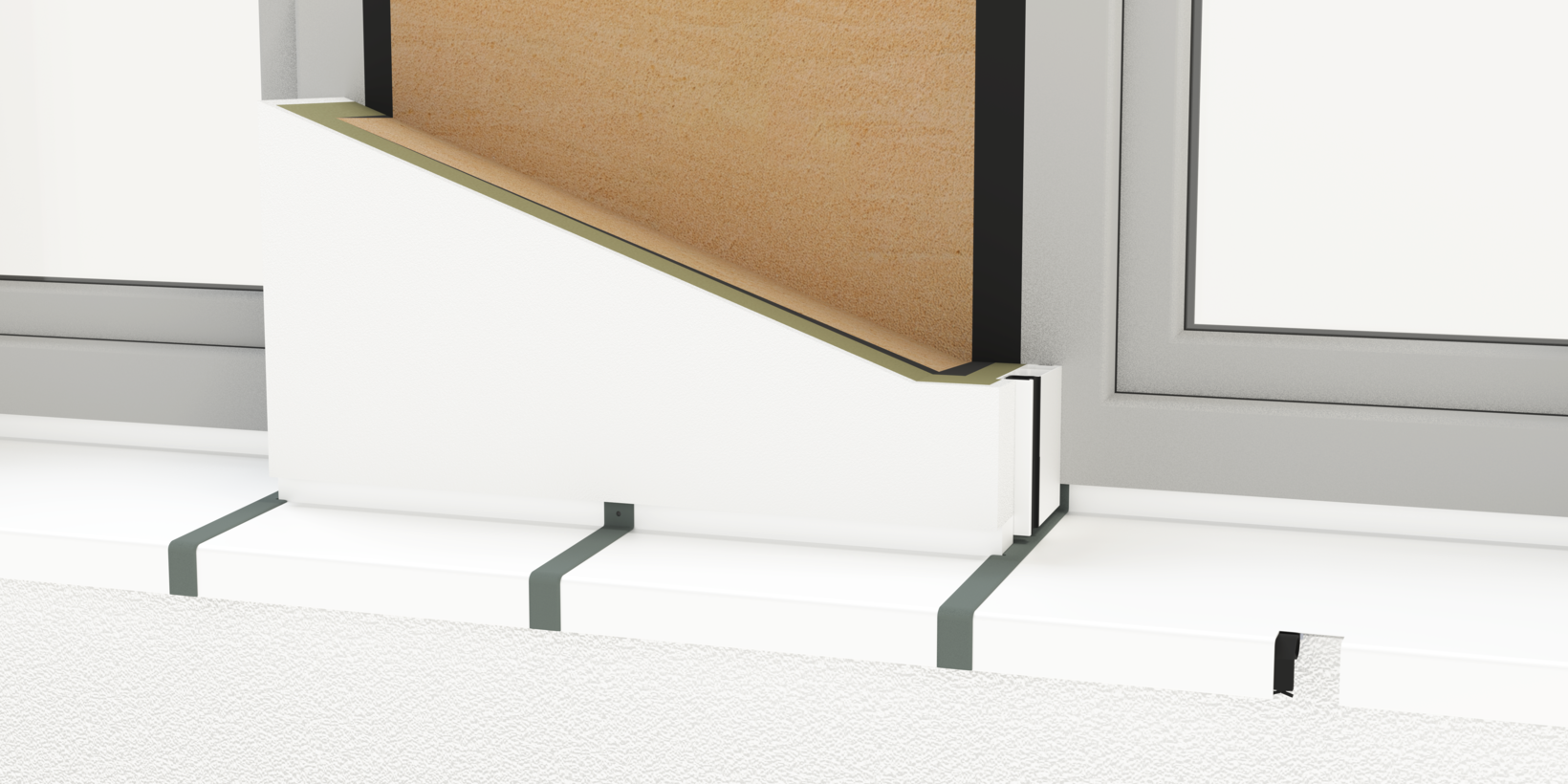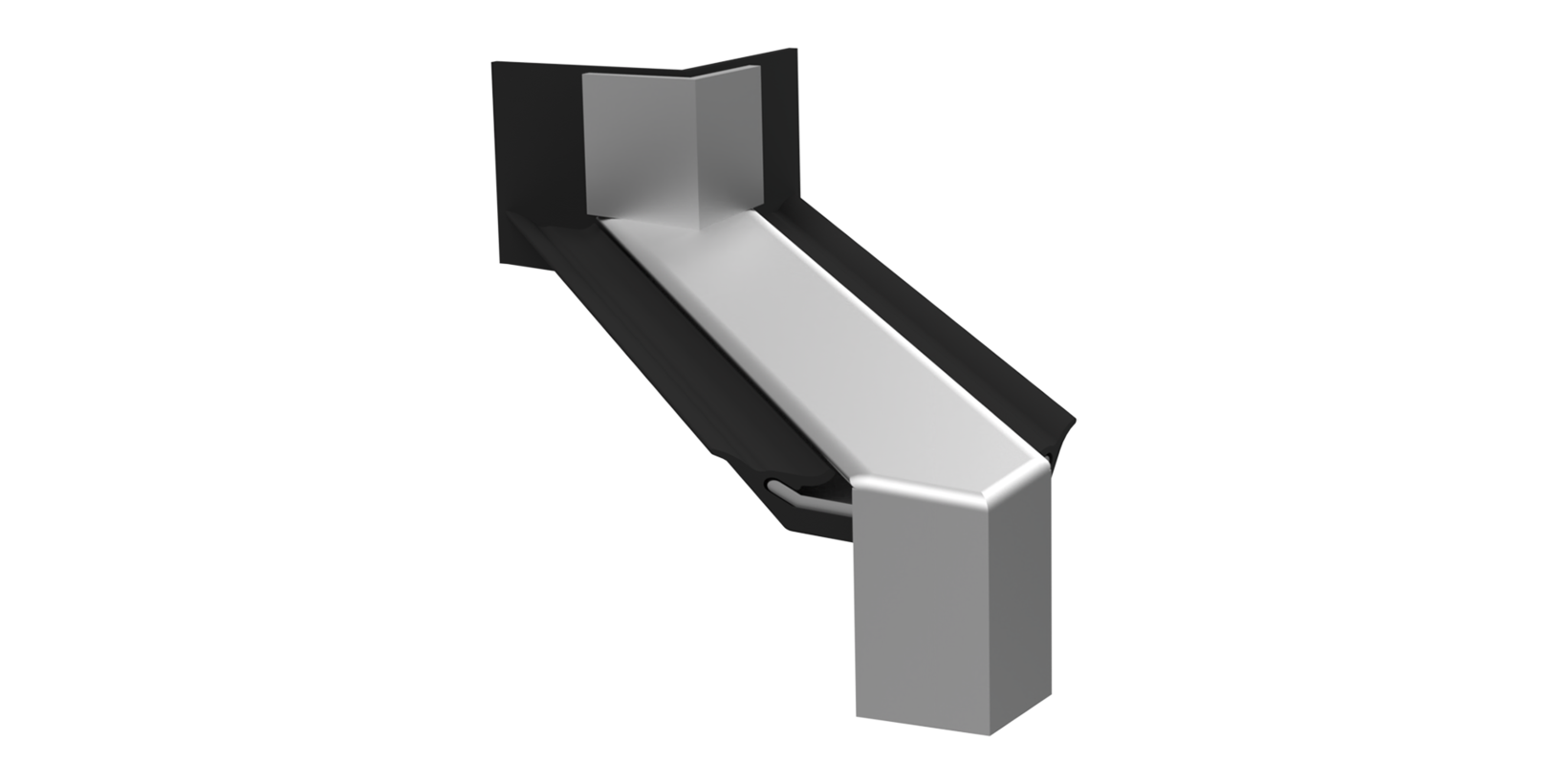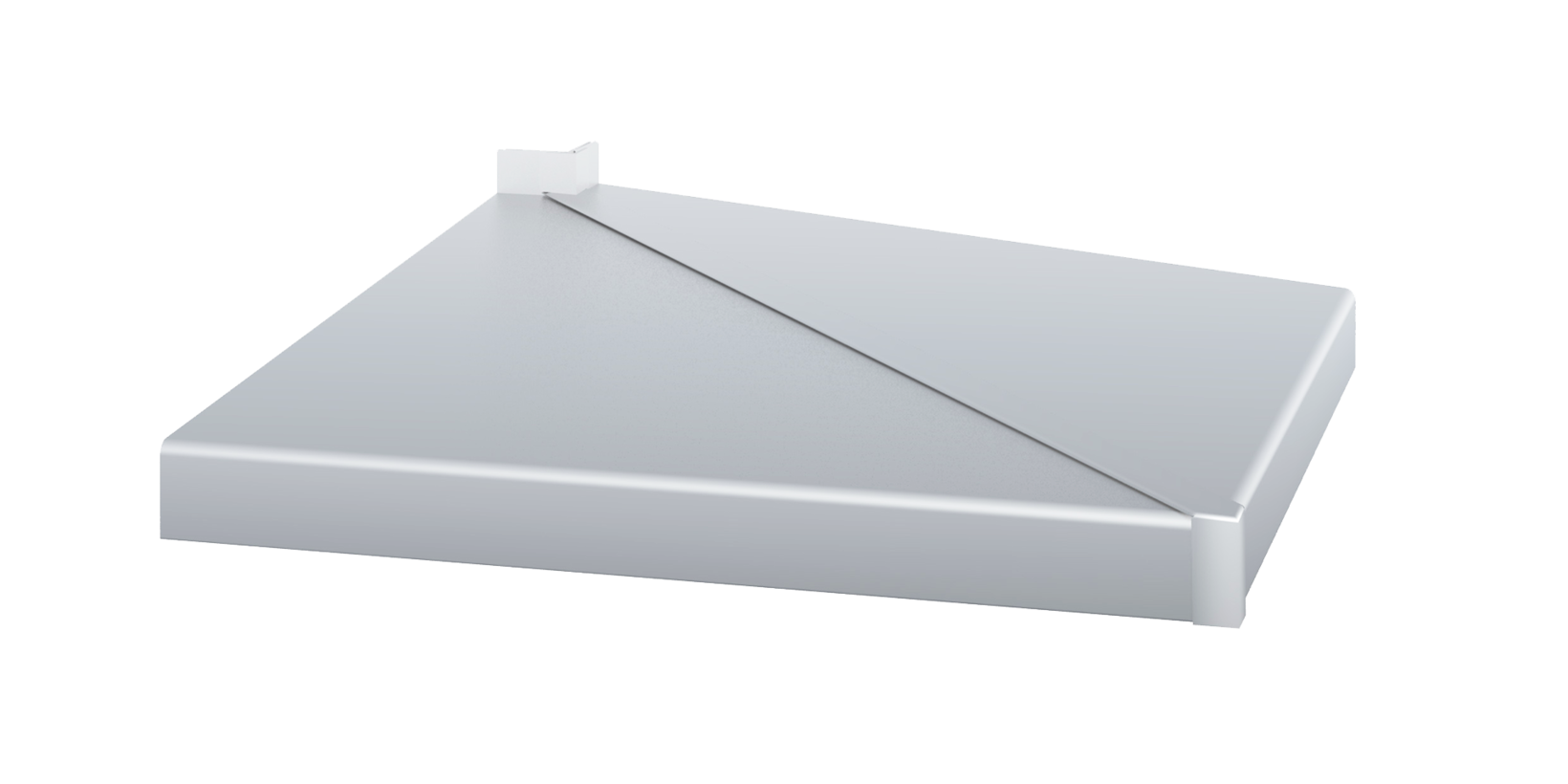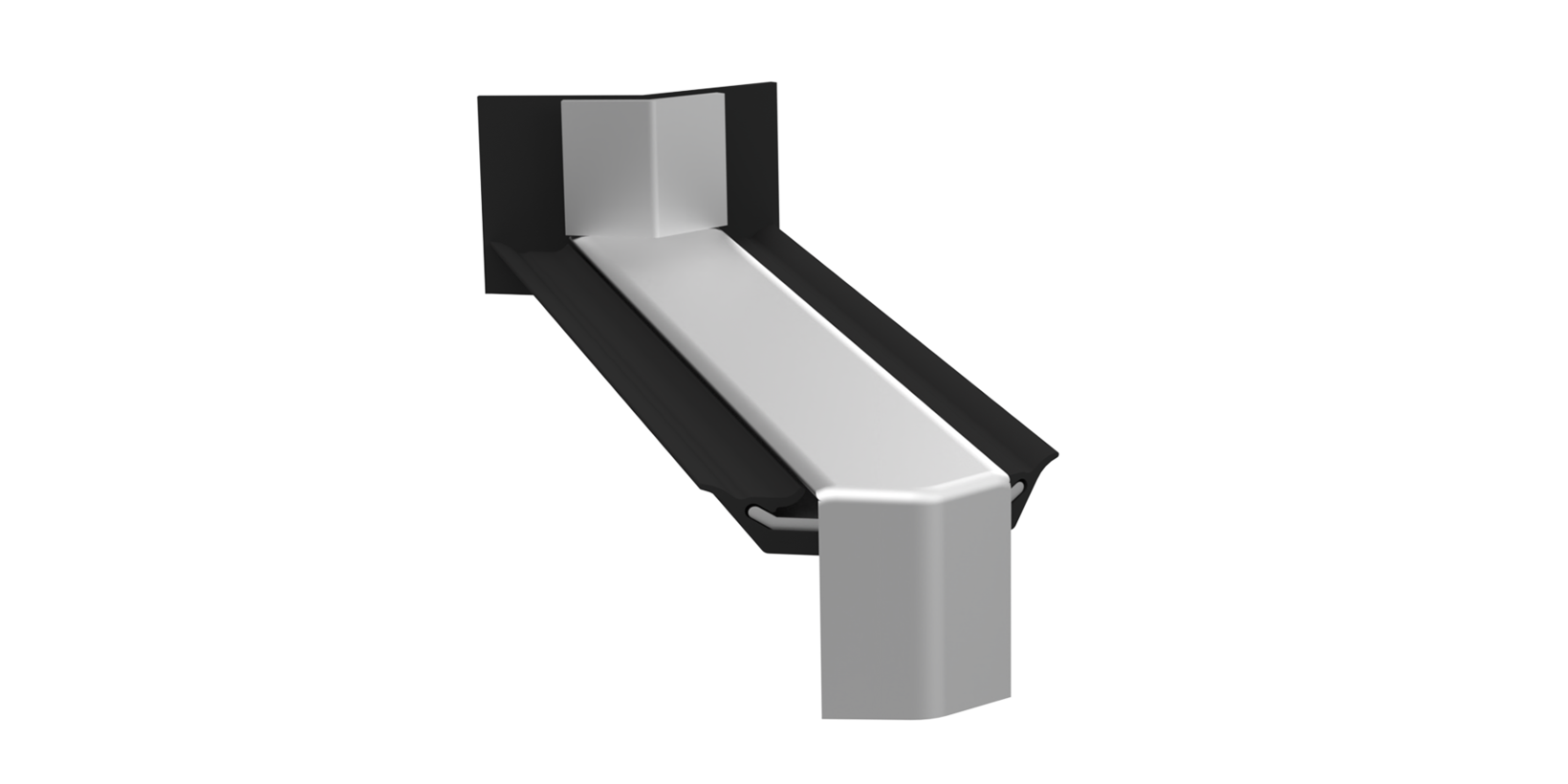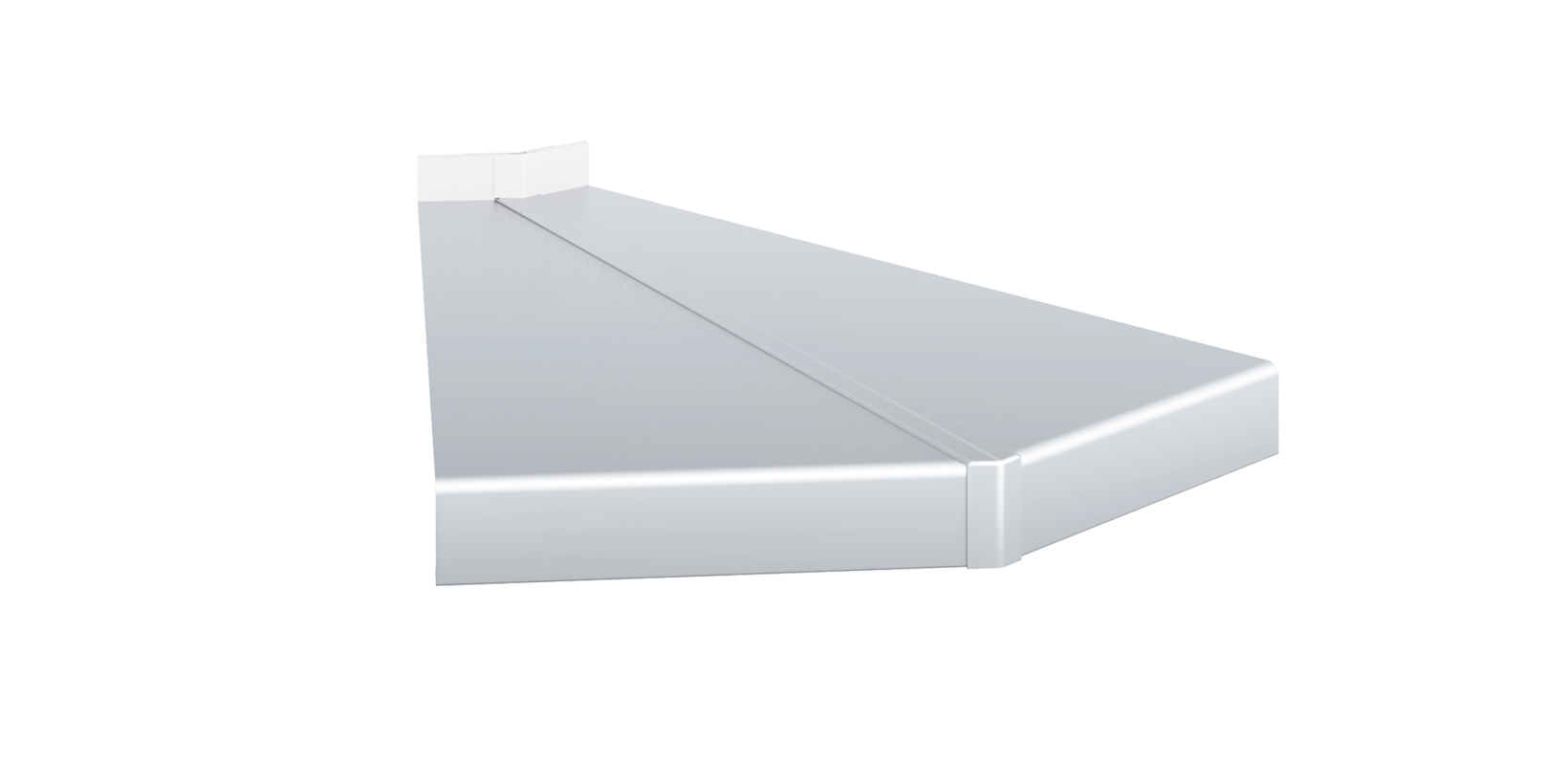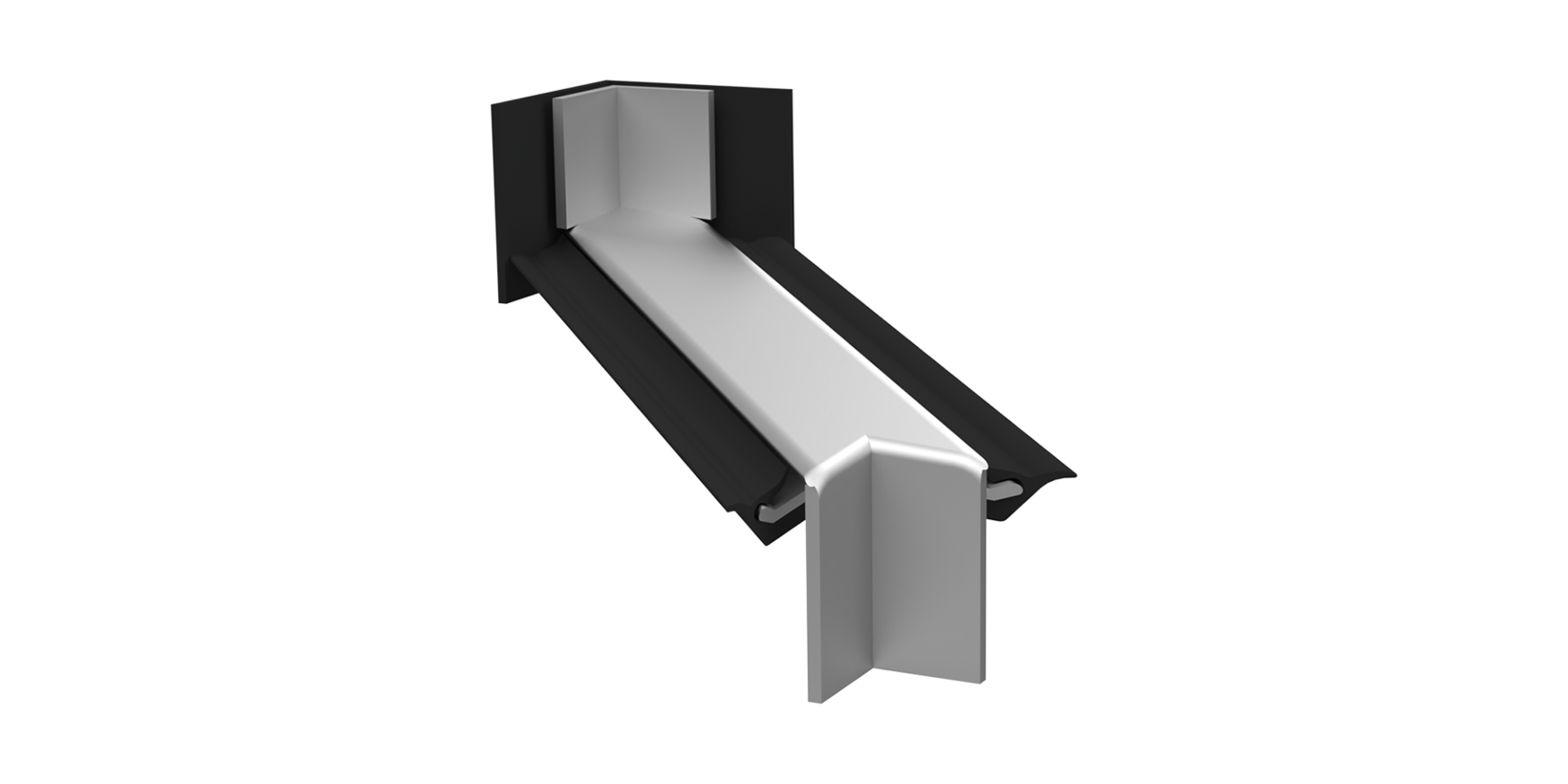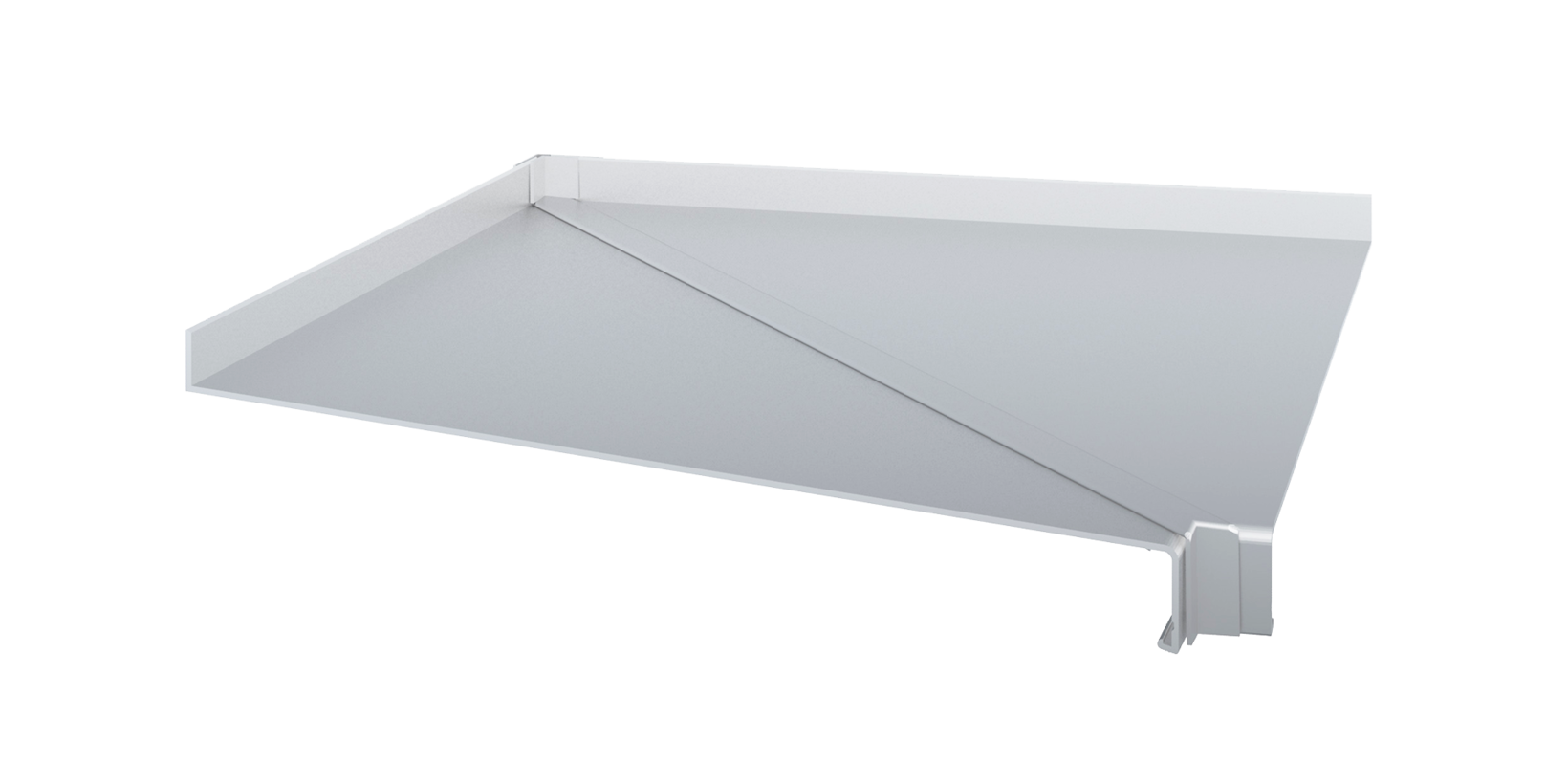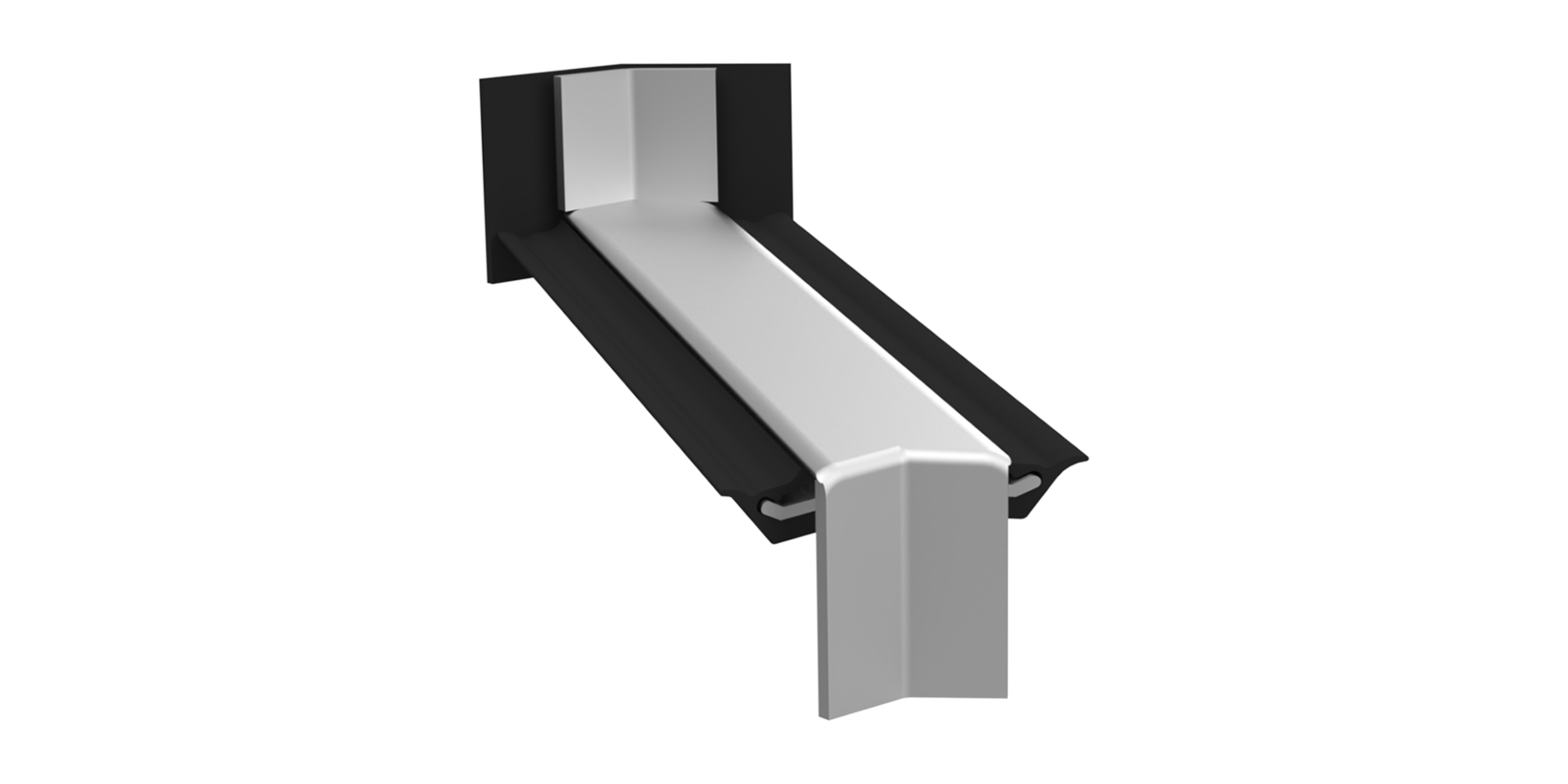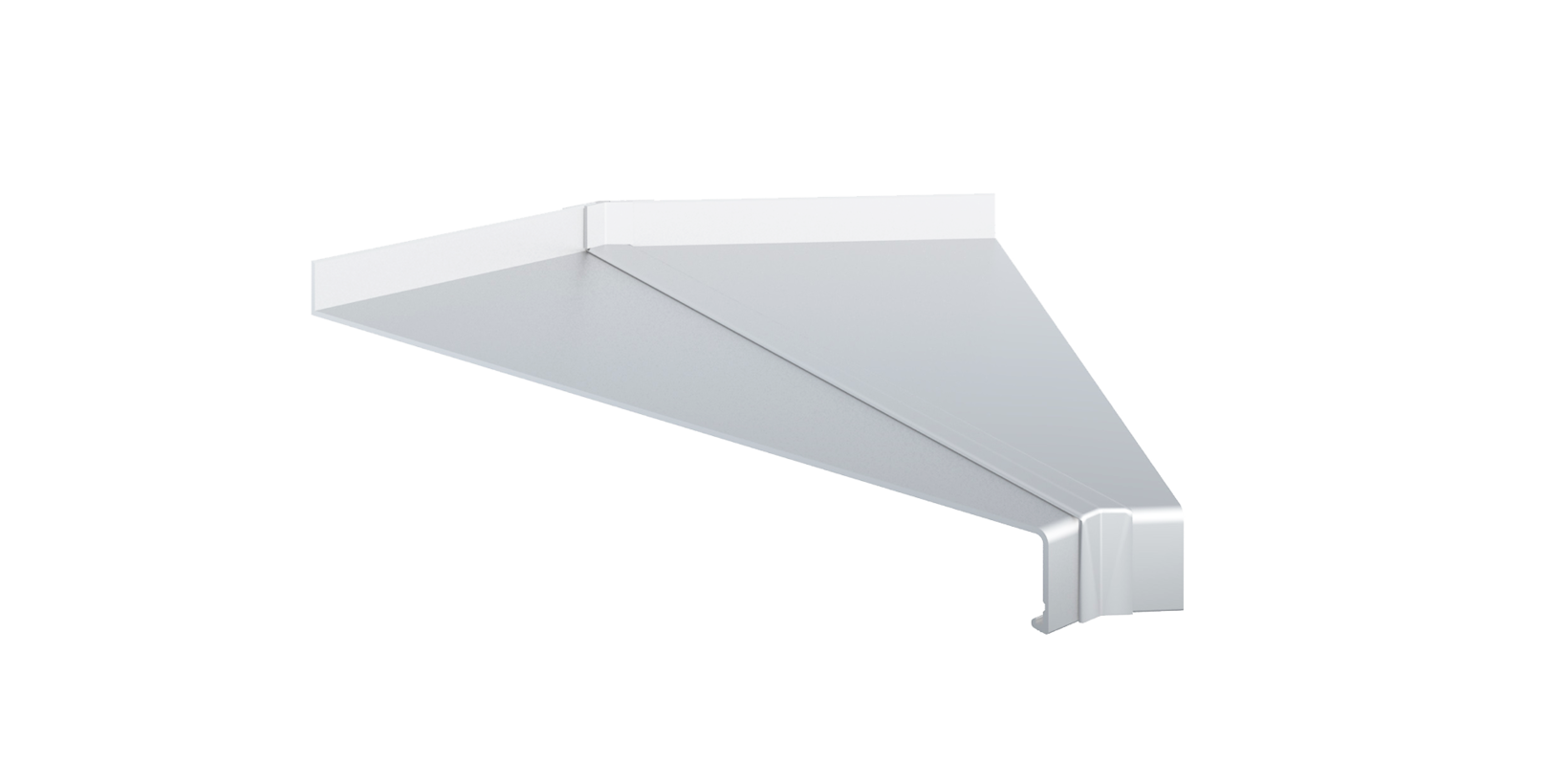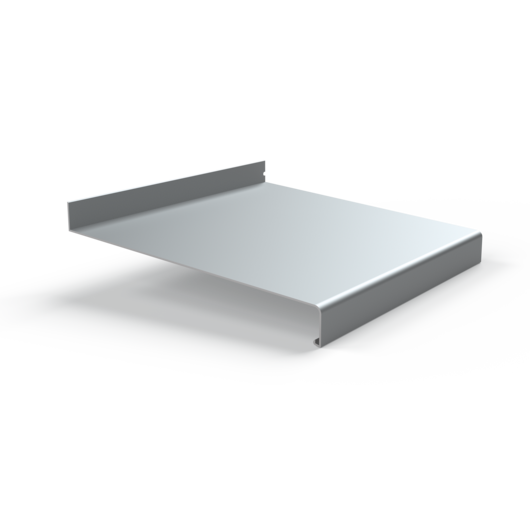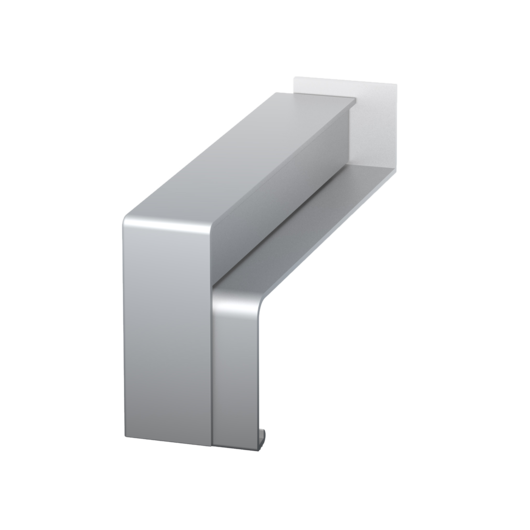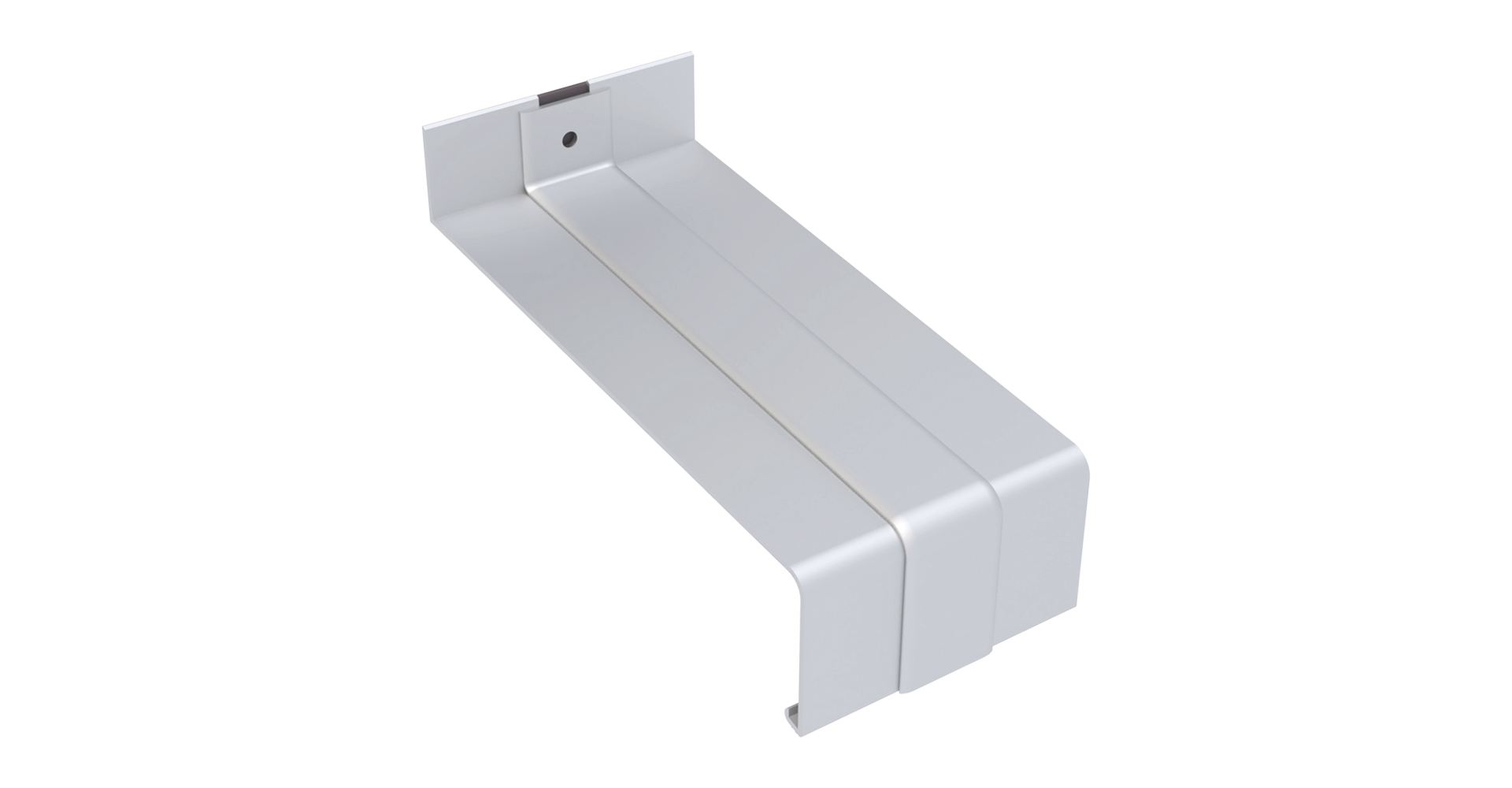
Window sill butt connectors from BUG
Aluminium window sill connectors: proven tightness & sophisticated technology
Product overview
H 500 D – the butt connector for aluminium window sills
Bringing light indoors can boost quality of life, which is why many architects plan large windows with correspondingly long window sills. From a length of three metres, aluminium window sills must be divided for safety reasons and installed with a corresponding window sill butt connector.
A complete window sill system gives you maximum safety, weather resistance and a seamless design. BUG’s Series 500 with window sill butt connector H 500 D offers you precisely this: a simple plug-in system that ensures water tightness under heavy rain.
Benefits of the window sill butt connector H 500 D
At BUG, sophisticated technical solutions go hand in hand with easy handling. Find out more about the advantages of window sill butt connectors.
Designs for all applications
- Connecting piece for two straight window sills up to max. 3,000 mm each
- Connecting piece for external corners two window sills meeting at 90° and 135° up to max. 3,000 mm each
- Connecting piece for internal corners two window sills meeting at 90° and 135° up to max. 3,000 mm each
Certified safety
- Tested to ensure water tightness under heavy rain at 1,950 Pa (guaranteed by dual flexible sealing technology)
- Reliably absorbs changes in the length of the window sill due to temperature fluctuations
- Corner-vulcanised and closed system seals
Simple installation
- Quick and practical installation thanks to simple plug-in system
- Compatible with all window frame materials (wood, wood-aluminium, plastic-aluminium, aluminium, plastic windows) due to the low material thickness of the corner-vulcanised seal of the butt connector on the screw plate
- Certified safety in combination with the AD 500 screw-on seal
Dual flexible sealing technology
The dual flexible sealing technology can only be found in BUG products such as the BUG H 500 D window sill butt connector, the BUG A 500 D external corner connector and the BUG I 500 D internal corner connector. This specially developed technology ensures water tightness under heavy rain of 1,950 Pa and is tested at the ift Rosenheim.
Two EPDM sealing lips, which are attached to both sides of the window sill connection, guarantee a high level of tightness and a water-repellent function. This dual flexible sealing technology also compensates for uneven areas in the window sill, temperature expansion and load differences in appropriate tolerances. These window sill coupling profiles are always balanced in the system. Therefore, as a manufacturer of the aluminium window sill joint connector H 500 D, we offer double reliability – for window sills and facades.
In the video shows the flexible sealing technology in action and how the plug-in system works.
Coupling stability for window sill butt connectors and corner connectors
BUG window sill connectors made of aluminium are available as butt and corner connectors for internal and external corners. The external and internal corner connectors form the connection between two window sills that meet at angles of 90° or 135°. Two straight window sills that meet are connected with a connecting piece, the BUG butt connector H 500 D.
Compatibility for different weather drip lengths
The BUG window sill connector series can be combined with all BUG window sills with a weather drip of 30 mm and 40 mm. To connect the watertight aluminium window sill connector to window sills, the window sills must be burr-free. This prevents damage to the coupling profiles and they continue to provide the required and intended tightness and reliability.
Stability with window sill butt connectors
The aluminium coupling profiles increase stability and resistance to warping. They also provide a secure hold for the window sill. They absorb temperature expansions of the window sill and prevent the window sill from warping. This prevents damage to the connecting pieces, the window sill system and the facade.
Aluminium window sill connectors in flexible use
The aluminium corner connectors are system-compliant connecting pieces for situations where window sills need to be divided or corner solutions are required. The corresponding and suitable coupling profiles can be found in the BUG accessories product range for window sills.
Installation is quick and easy. The BUG aluminium window sill connector is simply plugged into the window sill by hand. It is essential to seal the window sill system on the screw plate when using external corner connectors. This is the only way to ensure that they provide a secure seal and repel water. Thanks to the dual flexible sealing technology, the BUG coupling profiles are certified to provide water tightness under heavy rain to 1,950 Pa.
Important questions about window sill butt connectors
Read the answers to the most frequently asked questions about window sill butt connectors. Further questions and answers about BUG Aluminium-Systems can be found on our FAQ page.
When it comes to corner windows and wall projections between windows, the window sills are connected via the corners. This requires the use of suitable connecting pieces. BUG offers corner connectors for angles of 90 degrees and 135 degrees.
Custom-made products for different angles are possible at BUG. Simply enter your request in the contact form. However, you will not receive a test certificate for custom-made products, as the water tightness under heavy rain is only tested and verified for standardised components.
We at BUG recommend using window sill butt connectors that are watertight under heavy rain in combination with window sill edges that boast the same water tightness, the ultimate goal being to create a window sill system that is completely water tight in all rain conditions. The entire screw plate essentially needs to be sealed. The combination of window sill butt connectors from BUG with the AD 500 screw-on seal has been tested and certified to be watertight under heavy rain. Window sill joints must be installed with great care. A second level of sealing is recommended.


